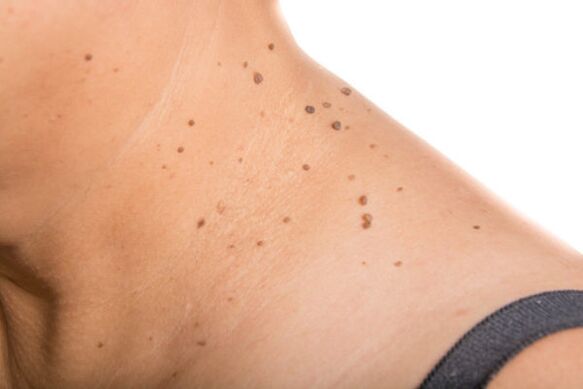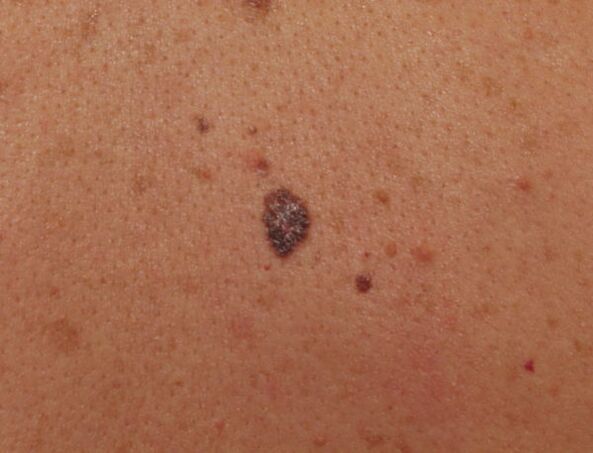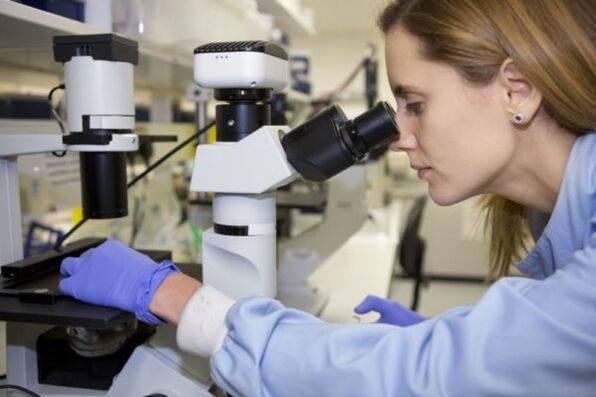Papillomas on the neck do not cause discomfort, but spoil the appearance. These neoplasms grow when the human papillomavirus (HPV) enters the body. The only exception is growth, which is often damaged. To remove a papilloma on the neck, special intervention (most often surgery) is required.

Cause
Papillomas are benign neoplasms caused by HPV infection. Doctors isolate more than a hundred viruses that can cause the appearance of such growths in the body. Hanging warts of small size often appear on the neck, reaching a diameter of 2-3 cm.
Human papillomavirus infection occurs through direct contact with HPV carriers. It is also possible to spread the pathogen through personal hygiene items or clothing. The virus can enter the child's body in the womb or during childbirth.
The likelihood of papilloma directly depends on the state of immunity. With a weakened body defense, the first growth appears a few days after infection.

Causes of the appearance of neoplasms in the neck include:
- frequent damage to the skin epithelium;
- allergic reactions;
- severe stress;
- respiratory diseases, helminthic invasion;
- long -term use of a number of drugs;
- overweight;
- bad habits;
- non -compliance with hygiene rules.
In women, hormonal imbalances during pregnancy, during menopause, or because of taking birth control pills are considered one of the common causes of growth formation.
If small growths appear in the neck, then no special treatment is required. If not exposed to provoking factors, such warts disappear without external intervention within three years.

Types and symptoms
Of all the types of papillomas on the neck, the following types of growths arise:
- Filiform- looks like a small bruise with a yellowish surface. In the future, feet appear, where growths are attached to the skin. Filil papilloma fleshy or light brown in color.
- Rata- This type of formation protrudes slightly above the surface of the cervix. The color of the flat growth does not differ from the color of the neighboring tissue. Over time, they merge with each other, thus increasing the affected area, and sometimes itching.
- Keratopapilloma- occurs mainly in people over 30 years of age, round or oblong.
- Seborrheic- distinguished by the presence of a flaking surface. This growth is often painful.
- Simple (porn)- This type of papilloma is localized on the upper limbs, but sometimes grows on the neck or face. The growth looks like a round wart, protruding far above the skin.
A large number of papillomas are single. But in the event of injury to the affected area or with a background of weakened immunity, the virus spreads to new areas, leading to the appearance of many neoplasms.

Papilloma growth is not accompanied by severe symptoms. In rare cases, viral activity causes:
- itching;
- combustion;
- sick.
When the problem area is injured, the affected area begins to bleed.
Possible consequences
Complications caused by papillomavirus activity are often caused by the action of an infection carrier. Frequent damage to growth causes:
- Development of papillomatosis. This pathology is characterized by a variety of growths that form in small areas of the body. In extreme cases, the entire cervical area is affected. This is explained by the fact that each wart contains the smallest particles of the virus, which when injured neoplasm spreads to healthy areas.
- Degeneration into malignant tumors. Violence is also more often caused by neoplasm trauma. Damage leads to the development of inflammatory processes in problem areas.

Papillomas on the neck are more often exposed to external influences, as a result of which open wounds form on the skin. Therefore, the affected area is often infected with pathogenic bacteria, which cause inflammation and swelling of the epidermis.
Therefore, if the warts come out and bleeding begins in the problem area, it is necessary to treat the damaged skin with an antiseptic composition and cover it with a bactericidal plaster. In addition, it is recommended to see a dermatologist in two to three days to rule out possible complications.
Diagnostics
Papillomavirus causes characteristic growth. However, in some cases, it is not possible to distinguish warts from other similar neoplasms.
To exclude other diseases expressed in the form of skin rashes, the following diagnostic measures are performed:
- PCR (polymerase chain reaction). Allows not only to diagnose the presence of the virus in the body, but also to assess the possibility of tumor degeneration.
- Histological analysis. It was prescribed because of a suspected malignant tumor.

Digine testing is considered more effective. This method is very sensitive and provides information on the presence of papillomavirus virus, infection strain and degree of oncogenicity.
Therapeutic techniques
To get rid of papilloma on the neck, you need to see a dermatologist. Not recommended to engage independently in the removal of neoplasms from the skin. This is especially true in cases of extensive tissue damage, which indicates a state of immune deficiency.
In the treatment of papillomavirus, hardware and drug techniques are used. The latter copes with a small single growth.
Drug therapy
Drug therapy is carried out mainly with the use of topical preparations.
To get rid of warts from the neck quickly, you can use special pharmaceutical products.
The use of medications does not always help get rid of papillomas. Moreover, this method of treatment does not exclude the possibility of neoplasms appearing in the same place.
Hardware techniques
To remove a papilloma from the neck, the following hardware removal techniques are used:
- Laser freezing- allows you to remove neoplasms from the skin with minimal risk of infection or bleeding.
- Cryodestruction- the procedure provides treatment for problem areas with liquid nitrogen, which damages tumor cells.
- Electrocoagulation- the tumor is removed by exposure to high frequency currents. This method is more painful than previously described.
- Radio wave removal- this method allows not only to remove the tumor, but also to take the tissue for subsequent histological examination.
In rare cases, removal of the tumor from the neck is performed surgically.
ethnoscience
Home treatment can be done with folk remedies. They help get rid of not only the smallest tumors, but are also effective in combating large growths.

To overcome papilloma on the neck will help:
- olive or castor oil. With this tool, it is necessary to lubricate the problem area several times a day;
- apple cider vinegar or ammonia. Any of these funds must be applied first on the cotton and applied for a few minutes during accumulation. The procedure should be performed no more than once a day;
- aloe juice. They need to soak cotton, which is applied to the problem areas and kept for 4-5 hours;
- tea tree oil. Simply apply two drops of the product daily on skin neoplasms;
- celandine color. To prepare it, you need to mix the juice of the plant with water in equal parts. The product is injected for two weeks in a dark place. The resulting medicine should be taken daily, 15 drops.
Regardless of the method chosen to combat papillomavirus, treatment must be accompanied by measures aimed at strengthening immunity. For this, it is recommended to take vitamin complexes and immunomodulators. From traditional medicine, decoctions of herbal ingredients from lemon balm, banana, dandelion root and other plants help strengthen the immune system.
Prophylaxis
It is quite difficult to prevent human papillomavirus infection. But if you follow the rules of prevention, you can prevent the appearance of neoplasms on the body. This requires:
- wash hands and body daily;
- Nutritious food;
- treat illness in a timely manner;
- to push away from bad habits;
- lead an active and healthy lifestyle.
If warts appear on the neck, it is recommended to be examined by a doctor to exclude malignant neoplasms. It is important to see a dermatologist if the warts have changed color or many growths appear on the skin.























